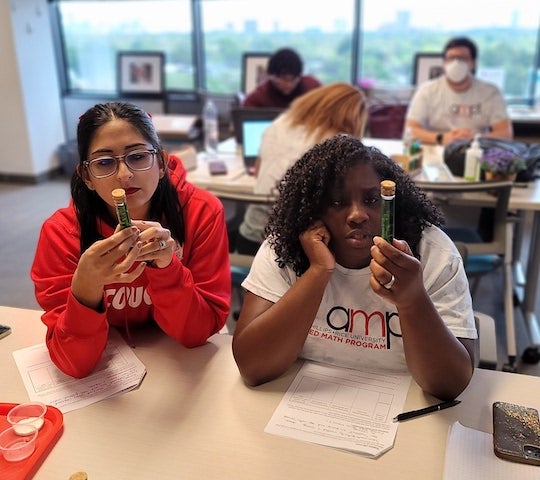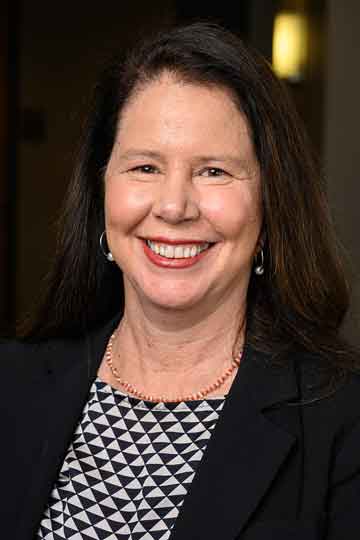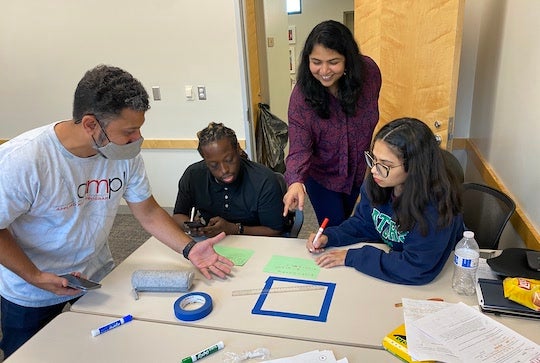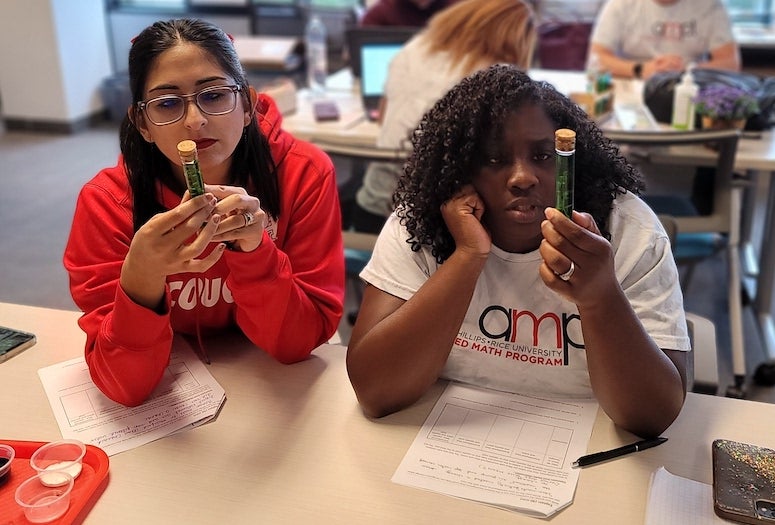When middle and high school teachers in science, technology, engineering and mathematics (STEM) pursue continuing professional development, their students benefit, and a new study from Rice University shows the payoff can be dramatic.

STEM education researchers at Rice tracked the progress of mathematics teachers for six years following their participation in a continuing education program for inquiry-based teaching and then looked at the academic paths of the teachers’ former students. The researchers found that students in the teachers’ classes were more likely to pursue a STEM major in college than their peers in other teachers’ classes, and Black female students were nearly twice as likely to do so.
The study, published in the open-access Journal of STEM Outreach, was led by Carolyn Nichol, an associate research professor of chemistry and director of Rice’s Office of STEM Engagement. She and her co-authors tracked participants in Rice’s Applied Mathematics Program (aka AMP!), and gathered convincing evidence that teachers who receive extra training in inquiry-based learning have the most dramatic impact on their students.
The outcome for Black female students was a surprise, Nichol said, but the data showed all students in classes taught by AMP! graduates benefited to some degree from their dedication to inquiry-based teaching.

The study drew its data from the University of Houston Educational Research Center, which gives access to data from the Texas Education Agency, the Texas Higher Education Coordinating Board and the Texas Workforce Commission.
“Texas is one of the few states that has this kind of database that’s accessible to researchers,” Nichol said, noting that the database simplified the task of matching AMP! participants to their students’ subsequent college choices.
“The program has been in existence long enough that the students of eighth-grade teachers in 2014 are now in college,” she said. “We wondered if having all this information available would let us see the impact of the program.”
The study showed that in general, students of AMP!-trained teachers were 5.3% more likely to pursue STEM majors in college than their peers. The effect was more pronounced for female students, at 5.5%. Asian students with AMP! teachers were 6% more likely to pursue STEM majors. Black students were at 6.6%, white students at 5.2% and Hispanic students at 4%.
The researchers found Black female students of AMP! teachers were 7.2% more likely to major in STEM in college, nearly double the percentage of Black female students of non-AMP! teachers.

Nichol credits inquiry-based learning, which provides context for students that straightforward lectures often do not.
“It’s about exploring science and math through real phenomena and asking a lot of questions,” she said. “That emulates what we might do in a lab.
“An important part is ensuring teachers don’t go into the classroom and just start talking about things in a language that seems foreign to students,” Nichol said, noting that math and science teachers are purposely paired in the yearlong AMP! to help them contextualize their teaching across both disciplines.
The researchers also suspect, but did not conclude, that having many Black female teachers take part in AMP! significantly contributes to the number of Black female students who choose STEM majors in college.
“There are a lot of studies that show role models matter,” Nichol said.
Study co-authors, all from Rice, include Cecilia Fernández, assistant director of diversity, equity, inclusion and outreach; Christopher Barr, director of assessment and evaluation of STEM programs in the Office of Research; Allen Antoine, associate director for math and computer science in the Office of STEM Engagement; and Christina Alston, associate director for equitable research, evaluation and grant development in the Office of STEM Engagement.
The research was supported by ConocoPhillips.
- Peer-reviewed paper
-
“Long-Term Impact of Teacher Professional Development on Black Female Students’ Engagement in STEM” | Journal of STEM Outreach | DOI: 10.15695/jstem/v6i1.01
Authors: Cecilia Henríquez Fernández, Christopher Barr, Allen Antoine, Christina Alston and Carolyn Nichol
- Image downloads
-
https://news-network.rice.edu/news/files/2023/02/0201_STEM-1-lg.jpg
CAPTION: Teachers work through a lesson in the Rice University-based Applied Mathematics Program. A new study shows participants in the yearlong personal development program encourage an increasing number of their students to pursue STEM studies in college. (Credit: AMP!/Rice University)
https://news-network.rice.edu/news/files/2023/02/0201_STEM-2-lg.jpg
CAPTION: Teachers in the Rice University-based Applied Mathematics Program focus on an experiment. A new study shows participants in the yearlong personal development program encourage an increasing number of their students to pursue STEM studies in college. (Credit: AMP!/Rice University)
https://news-network.rice.edu/news/files/2023/02/0201_STEM-3-cn2-lg.jpg
CAPTION: Carolyn Nichol (Credit: Rice University) - Links
-
Applied Mathematics Program: https://research.rice.edu/rstem/amp
Office of STEM Engagement: https://research.rice.edu/rstem/
- About Rice
-
Located on a 300-acre forested campus in Houston, Rice University is consistently ranked among the nation’s top 20 universities by U.S. News & World Report. Rice has highly respected schools of Architecture, Business, Continuing Studies, Engineering, Humanities, Music, Natural Sciences and Social Sciences and is home to the Baker Institute for Public Policy. With 4,552 undergraduates and 3,998 graduate students, Rice’s undergraduate student-to-faculty ratio is just under 6-to-1. Its residential college system builds close-knit communities and lifelong friendships, just one reason why Rice is ranked No. 1 for lots of race/class interaction and No. 1 for quality of life by the Princeton Review. Rice is also rated as a best value among private universities by Kiplinger’s Personal Finance.

